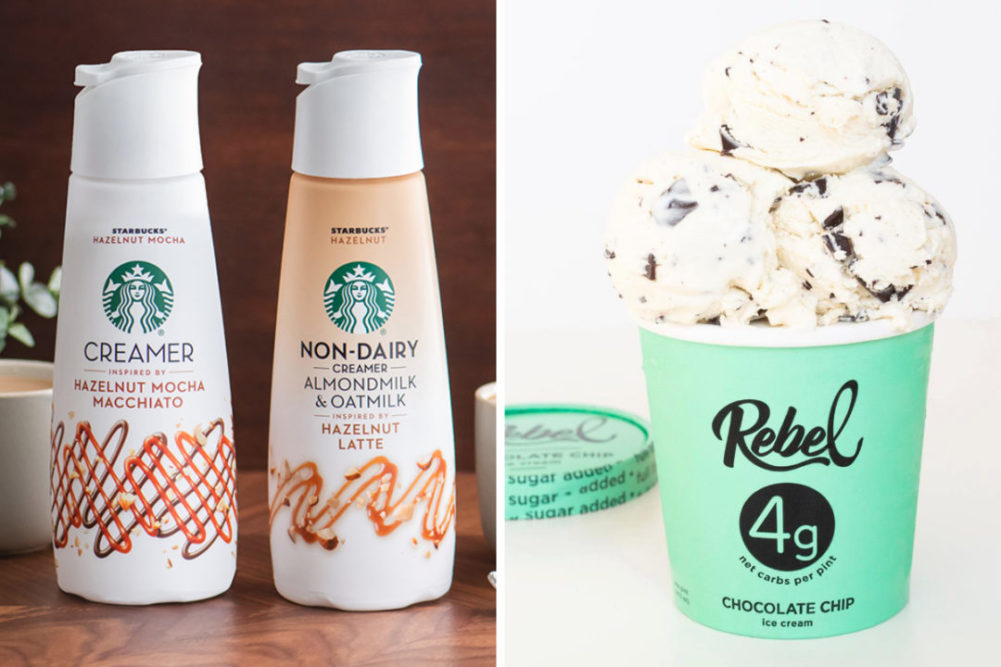KANSAS CITY — COVID-19 restrictions had consumers, in 2020 and into 2021, searching for premium, indulgent items to be eaten at home. Food and beverage companies, ranging from those started on Kickstarter to multinational corporations, responded.
“We needed to associate our appetites with fun,” said Larry Levin, executive vice president, consumer and shopper marketing, for Information Resources, Inc., a Chicago-based market research firm. “Premium was not just for the rich and famous. It was for all generations, all income levels. We saw plenty of households with low-income spending on premium. They couldn’t eat out. They spent it at home.”
Mr. Levin gave examples of successful premium items when he spoke Aug. 25 in the Trends and Innovations virtual webinar presented by Food Business News.
Starbucks Creamers placed fourth in IRI’s New Product Pacesetters list in 2020 by reaching $105 million in sales and 76% distribution. Nestle SA, Vevey, Switzerland, offers Starbucks branded products at retail through a global partnership with Seattle-based Starbucks Corp.
“Believe it or not, Starbucks Creamers came to life in just nine months,” Mr. Levin said. “There was a meeting internally to design the perfect at-home creamer. Remember this came way before COVID. What Nestle beverage was focusing on was providing that parlor experience that you get when you go to Starbucks at home.”
He praised the bottle, with its nozzle and lift mimicking the carafe seen in Starbucks stores.
“The product just looks so beautiful,” Mr. Levin said. “Then the flavor varieties were all the flavor varieties consumers really adopted when they are in the cafe. Because they couldn’t go to Starbucks to have a toffee nut latte or a caramel macchiato, this was the next best alternative to bring home that experience.”
Premium paid off in the ice cream category as well. Eight frozen treats, including ice cream, cracked the top 100 in the New Product Pacesetters for 2020.
“People wanted to indulge at home,” Mr. Levin said. “They wanted to be able to enjoy the merits of being together as a family. Certainly, ice cream was a great way to do that.”
Rebel Ice Cream from Rebel Creamery LLC placed fifth in the New Product Pacesetters by reaching $97 million in sales and 50% distribution in 2020. The product, promoted as keto-friendly and containing no added sugar, began as a Kickstarter crowd-funding campaign.
“The whole message to the industry is, so much innovation happens in the board room, but a lot of innovation happens in the basement,” Mr. Levin said.
New Product Pacesetters tracks new or extended brands as well as existing brands in new categories. Once a product’s distribution reaches 30%, year one starts.
Year two can be just as important.
“You have to have a long-term vision for new product success,” Mr. Levin said. “In the second year, you’ve really got to maintain your distribution. Let people know you’re out there.”
Year-to-date in 2021, 9% of US households have tried Starbucks Creamers, up from 5.2% at the end of 2020, Mr. Levin said. The percentage of US households trying Rebel Ice Cream stood at 3% year-to-date, up from 1.9% at the end of 2020.
“You really have to think about the second year as a little ‘i’ in innovation, bringing those flavors, bringing those package sizes, doing whatever you can do to spark (innovation), because you don’t know when the desire to buy your product is going to come and bring in a new user,” Mr. Levin said.

